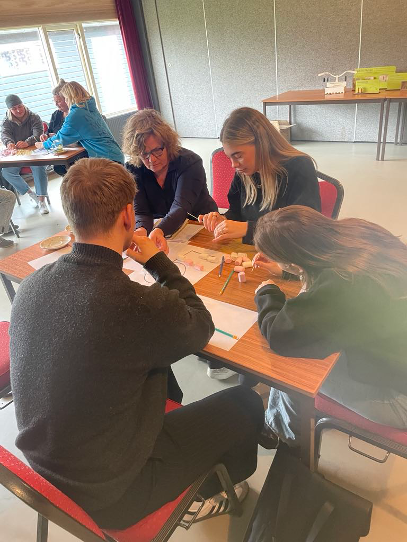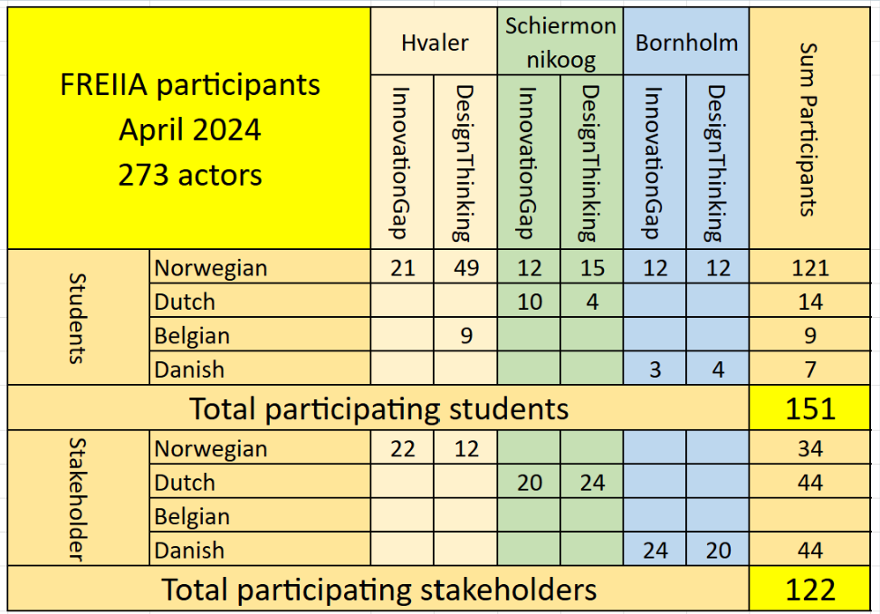The FREIIA project (2022-2025) is a groundbreaking initiative aimed at fostering cooperation and innovation among island communities in Europe. By visiting various islands such as Hvaler, Schiermonikoog, and Bornholm, and with upcoming visits to Groix, Ushant, and Koster, we are dedicated to implementing the Quadruple Helix model. This model engages stakeholders from academia, industry, society, and government to create sustainable solutions for the unique challenges faced by these islands.
The UNIC Method: A Systematic Approach
In the initial phase of each island visit, we employ the UNIC method, which stands for “development ability at the center”. Developed by Dr. Lars Hein and the Unic Group, this method identifies the gap between the desired and current situations of an organization. Through structured interviews with key stakeholders such as local authorities, business leaders, and community representatives, we gather qualitative and quantitative data tailored to each island's unique focus areas. This thorough data collection allows us to understand local challenges, needs, and resources comprehensively.
After transcribing and analyzing this data, our team identifies the most pressing problem areas using organizational development methods. Subsequently, we organize a workshop with key stakeholders to discuss findings and develop concrete solutions. The flexibility and adaptability of the UNIC method ensure that it can address the specific needs and contexts of each island, laying a solid foundation for well-informed decisions and effective measures for sustainable development.


Workshops: Collaborative Problem-Solving
Based on our analyses, we formulate clear problem statements that form the basis for the second phase – workshops. In these workshops, we invite the same stakeholders from the interviews, along with other relevant individuals. The goal is to explore possible solutions through collaboration and sharing of perspectives, ensuring that all participants feel a sense of ownership over the developed ideas.
Insights and Outcomes
Our visits have yielded various outcomes. One significant observation is that island residents often have a strong sense of ownership over their communities, which can sometimes result in conservatism, making it challenging to gain acceptance for necessary measures. However, we have also found that challenges are often similar across islands, although solutions can differ significantly due to varying local perspectives and resources.
A successful outcome occurred on Schiermonikoog in the Netherlands. During a workshop, a municipal representative collaborated with a local business owner who creates bags from waste materials. She was passionate about teaching young people how to transform waste into usable products. This collaboration led to implementing this idea in the island's schools, significantly engaging more people in waste reduction efforts.
Strengthening Cooperation and Innovation
Bringing together different stakeholders on a common platform has proven to strengthen cooperation and solidarity. Through joint discussions and problem-solving, participants can develop innovative solutions that everyone feels ownership over. Cross-border academic collaboration has been particularly valuable, providing students with opportunities to encounter different cultures and ways of thinking, thereby enriching the project.
Future Improvements
Based on our experiences, we plan several improvements for future visits. We will map the islands more thoroughly in advance to better understand local conditions, helping us prepare better and provide participants with more relevant information. Strengthening relationships with local partners is crucial for a smooth process, especially in identifying and involving relevant stakeholders. We will also emphasize informing and engaging participants more thoroughly before and during our visits.
Involving students as both participants and project leaders (internship students) will continue to be a key approach. This model has proven to be very positive, providing students with valuable practical experience while bringing fresh perspectives and energy to the project.

Conclusion
The FREIIA project has provided us with valuable insights into how island communities can collaborate to solve common challenges. By involving stakeholders from all sectors of society, fostering local ownership of solutions, and learning from each other's experiences, we can help create sustainable and innovative communities on Europe's islands. We look forward to continuing our work and implementing our improvement strategies to achieve even better results in the future.
Sources:
Hein, L. (December, 1988a). Diagnose på udviklingsfunktionen (Bilag A). UNIC-gruppen.
Hein, L. (December, 1988b). Diagnose på udviklingsfunktionen (notat 2). UNIC-gruppen.
